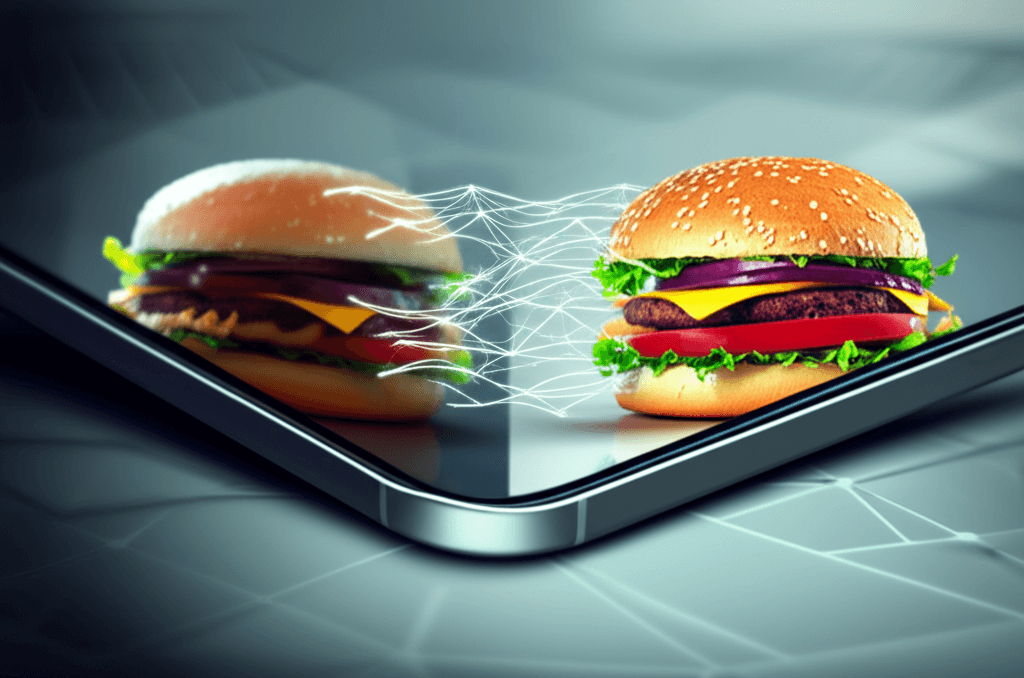Uber Eats Bets on AI to Make Food Look Perfect, Drive Restaurant Sales
Uber Eats perfects online menus with generative AI, enhancing food photos and descriptions while sparking authenticity debates.
August 1, 2025

In a significant move to harness the power of artificial intelligence, food delivery giant Uber Eats has rolled out a new suite of tools designed to help restaurants create more appealing online menus.[1][2] At the heart of this initiative is a feature that uses generative AI to enhance and manipulate food photography, turning potentially lackluster images into mouth-watering visuals intended to entice customers.[3][4] This development places Uber at the forefront of a growing trend where AI is not just a background process but an active participant in shaping the consumer experience, raising both prospects of increased sales for small businesses and questions about authenticity in the digital marketplace.[5] The new features extend beyond just images, offering AI-powered assistance for writing menu descriptions and summarizing customer reviews, aiming to streamline operations for the more than 1.5 million merchants on its platform.[3][2]
The core of the new offering is an AI tool that can "detect and enhance low-quality food images."[6][2] This system can make automatic adjustments to lighting, resolution, and framing to improve a photo's overall quality.[7][1] More significantly, it employs generative AI to make substantial edits, such as digitally placing the food onto a more attractive plate or background.[3][6] In some examples provided by the company, the AI appears to expand the food item itself, filling in gaps to create a more polished and complete presentation.[6][1] This capability is aimed directly at solving a major pain point for many restaurants, especially smaller, independent establishments that may lack the resources for professional food photography, which can cost hundreds of dollars per session.[4] Since compelling visuals are known to significantly increase orders—by as much as 35% according to some studies—Uber Eats is betting that better photos, even AI-assisted ones, will translate to higher conversion rates and revenue for its partners.[3]
This is not Uber's first venture into AI-generated food imagery. A previous attempt in 2023 was met with public ridicule and criticism after the platform began populating menus with bizarre and grotesque AI-created pictures without the restaurant's knowledge.[3][8][9] Images of mangled pizzas and other surreal dishes highlighted the pitfalls of early-stage generative AI, which struggled with accuracy and context, famously not understanding that in New York, a "pie" refers to a pizza, not a dessert.[8][9] This time, Uber appears to be taking a more refined approach, focusing on enhancing existing photos rather than creating them from scratch, and giving merchants the ability to review and approve any AI-generated content before it goes live.[10] To further address the issue of missing images, the company is also crowdsourcing content by offering customers in the U.S., UK, Canada, and Mexico in-app credits for submitting their own photos of menu items that lack a picture.[6][1][2]
The implications of this AI integration are multifaceted. For small restaurant owners, these tools could democratize marketing, providing access to professional-grade menu presentation without the high cost.[3] Beyond photo enhancement, the AI suite includes tools to automatically generate vivid menu descriptions from basic item details and to summarize customer reviews into concise, actionable insights for restaurant managers.[4][2][11] According to Uber, a survey of merchants already using these tools found that 78% believe they are effective.[2] However, the use of AI to alter food images raises ethical questions.[4] While the goal is to "showcase their dishes more accurately," the line between enhancement and misrepresentation can be thin.[5][2] Critics worry that overly doctored images could mislead customers, creating a discrepancy between the picture-perfect dish on the app and the real meal that arrives at their door.[5][11] The accuracy of the AI remains a concern, as generative tools can be unpredictable and prone to "hallucinations," or creating content that is not based in reality.[12][13]
In conclusion, Uber Eats' deployment of a sophisticated AI toolkit for its restaurant partners marks a new chapter in the intersection of technology and the food industry. By offering to digitally perfect food photos, write compelling descriptions, and distill customer feedback, the company aims to provide tangible value to businesses and a more appealing interface for consumers.[3][2] This initiative reflects a strategic effort to overcome past AI failures with more advanced, controllable technology.[3] Yet, as the platform blurs the line between a real photograph and an AI-perfected image, it enters a gray area where the convenience and aesthetic benefits must be weighed against the importance of authenticity.[5][11] The success of this venture will ultimately depend on whether the AI can consistently produce enhancements that are both appealing and true to the actual meal, ensuring that the picture-perfect dish online is a faithful representation of the one that gets delivered.[12]
Sources
[2]
[5]
[8]
[10]
[11]
[12]
[13]